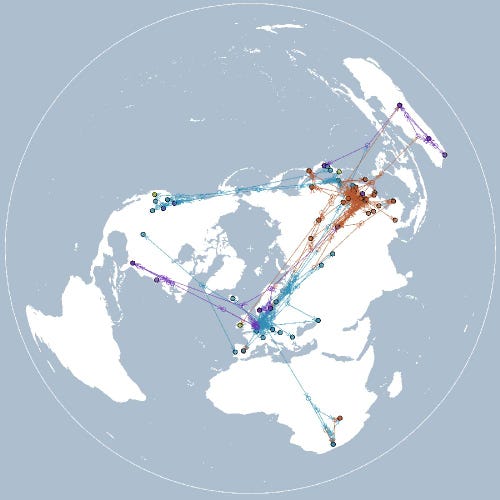International research consortium to develop avian flu virus forecasting tool.

European Union countries are being urged to step up surveillance and biosecurity measures to guard against possible new outbreaks of avian influenza this year, according to the European Food Safety Authority (EFSA).
Meanwhile, a $3 million study aims to develop computer models to forecast and control avian influenza outbreaks, according to The Roslin Institute, which is leading the study.
The EFSA warning follows outbreaks of highly pathogenic avian influenza (HPAI) among wild and domesticated birds in western Russia and Kazakhstan over the past few months. This region is a known autumn migration route for wild water birds heading to Europe.
Northern and Eastern Europe are likely to be the most vulnerable to new outbreaks, given past experience, EFSA said. When HPAI was detected in the same area of Russia in the summers of 2005 and 2016, epidemics followed in Northern and Eastern Europe. If the pattern is repeated this year, HPAI is expected to arrive in the same areas of Europe in autumn or winter. Subsequent spread to countries in Southern and Western Europe is also possible.
The alert is included in the latest update on avian influenza in Europe and beyond. The new report — which is compiled by EFSA, the European Centre for Disease Prevention & Control (ECDC) and the EU reference laboratory for avian influenza — covers May to August 2020.
The report recommends that, in accordance with EU legislation on risk mitigation and early detection systems for HPAI, EU countries should:
Take measures to detect suspected cases of HPAI promptly, and increase biosecurity measures at poultry farms.
Warn veterinary and wildlife health authorities of the likely risk of HPAI introduction, and urge them to carry out observation and prompt testing of dead or sick wild birds.
EFSA said virus spread is likely to be triggered by a sudden and persistent fall in temperatures in central Russia and Kazakhstan. Several studies demonstrated that cold weather conditions led to the rapid westward expansion of the HPAI virus via infected migratory birds during the 2005-06 and 2016-17 waves.
The risk of transmission of avian influenza viruses to the general public in Europe remains very low. However, to minimize the risk of transmission, people are advised not to not touch dead birds without wearing appropriate personal protective equipment, EFSA said.
Prediction tool
The Roslin Institute reported that an international research consortium is developing a new tool that can understand and forecast how the avian flu virus evolves as well as the risk associated with new virus strains.
The tool will be the first to predict factors that are currently difficult to forecast, such as whether new virus strains will cause serious harm, the institute said, noting that output from the tool could benefit vaccine development and control strategies to prevent future outbreaks.
The $3 million study is funded by the U.S. National Science Foundation, the U.K. Biotechnology & Biological Sciences Research Council and the National Natural Science Foundation of China. It is a collaboration with the U.S. Department of Agriculture’s National Poultry Research Center, the University of Georgia and the Chinese Academy of Sciences’ Institute of Microbiology.
Avian flu can cause "massive economic losses in global food production, as it infects pigs as well as poultry," Roslin said. Producing vaccines is difficult because of the variety and changeability of flu strains.
Roslin explained that the prediction tool will combine three computer models and will use more than 1 million data entries of the virus’ genetic makeup that are derived from global surveillance programs. 
Roslin said one model will identify key changes in the virus genome that influence its behavior; another will predict how the virus evolves within a bird as it adapts to different immune conditions, and the third will integrate outputs from the first two with additional geographic and other data.
The models will be tested for accuracy in laboratory experiments.
"Bird flu is a health and economic burden worldwide, and tackling the virus is a big challenge. The computer models that will be developed in this study could be used to inform vaccination and other control strategies and prevent future outbreaks," study lead professor and Roslin chair of virology Paul Digard said.
The institute said the model development will be informed by a series of workshops to gather input on viral evolution risk and predictions from stakeholders such as the World Organization for Animal Health, the World Health Organization and poultry stakeholders to ensure useful outputs.
"Advances in computational approaches, combined with the large amounts of sequencing data available, mean that it is possible to develop modeling tools with genuine predictive power of the evolution and spread of bird flu," Roslin research group leader Dr. Samantha Lycett added.
About the Author(s)
You May Also Like



